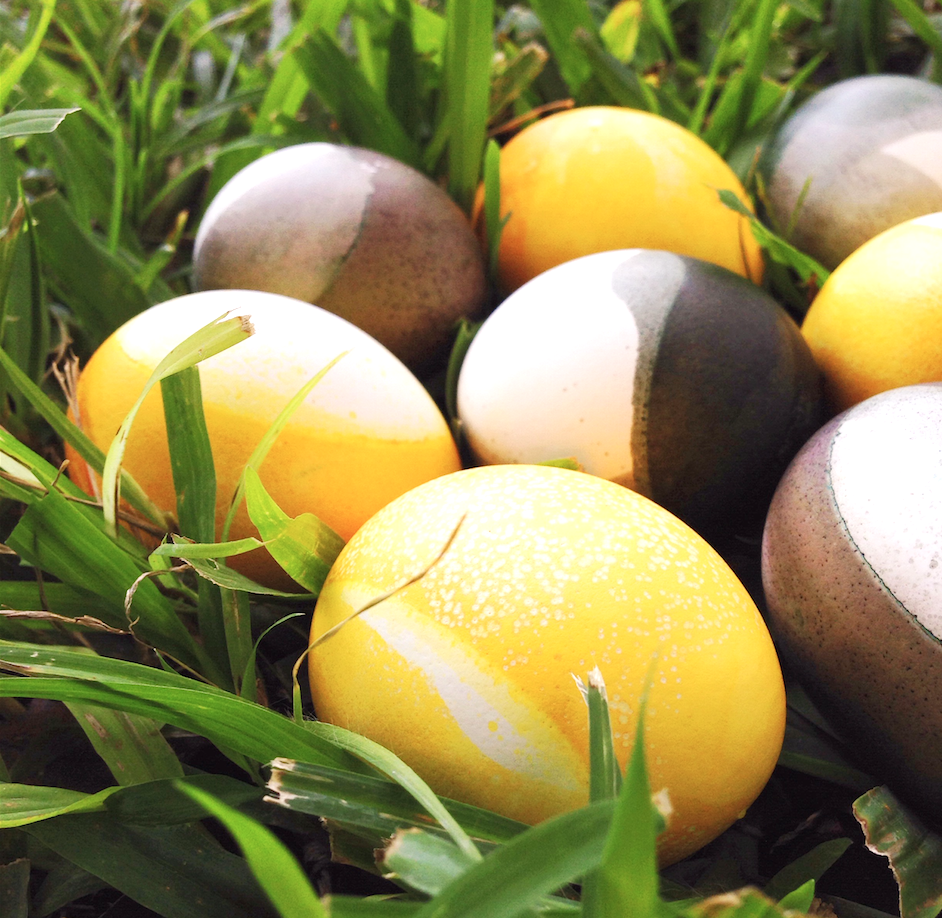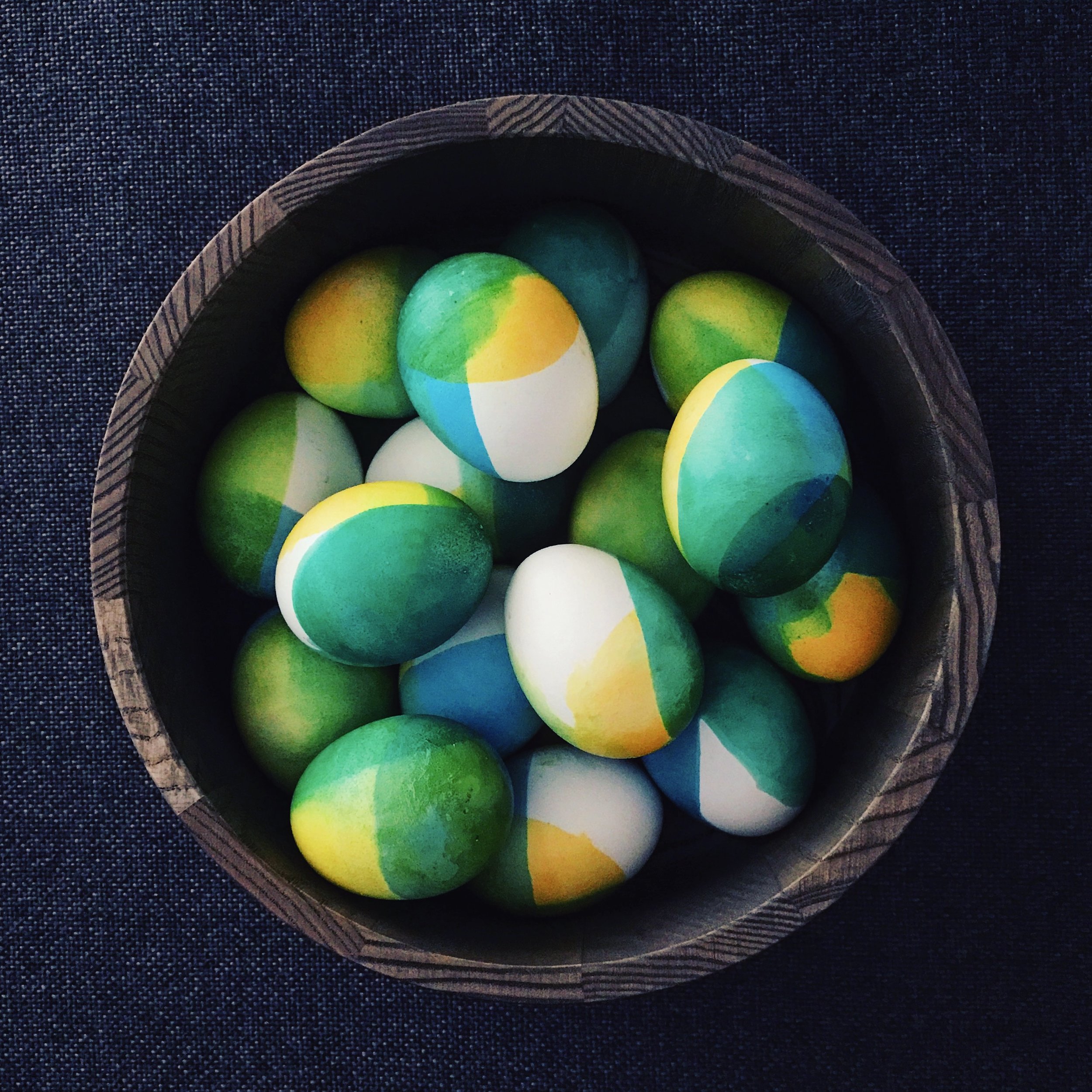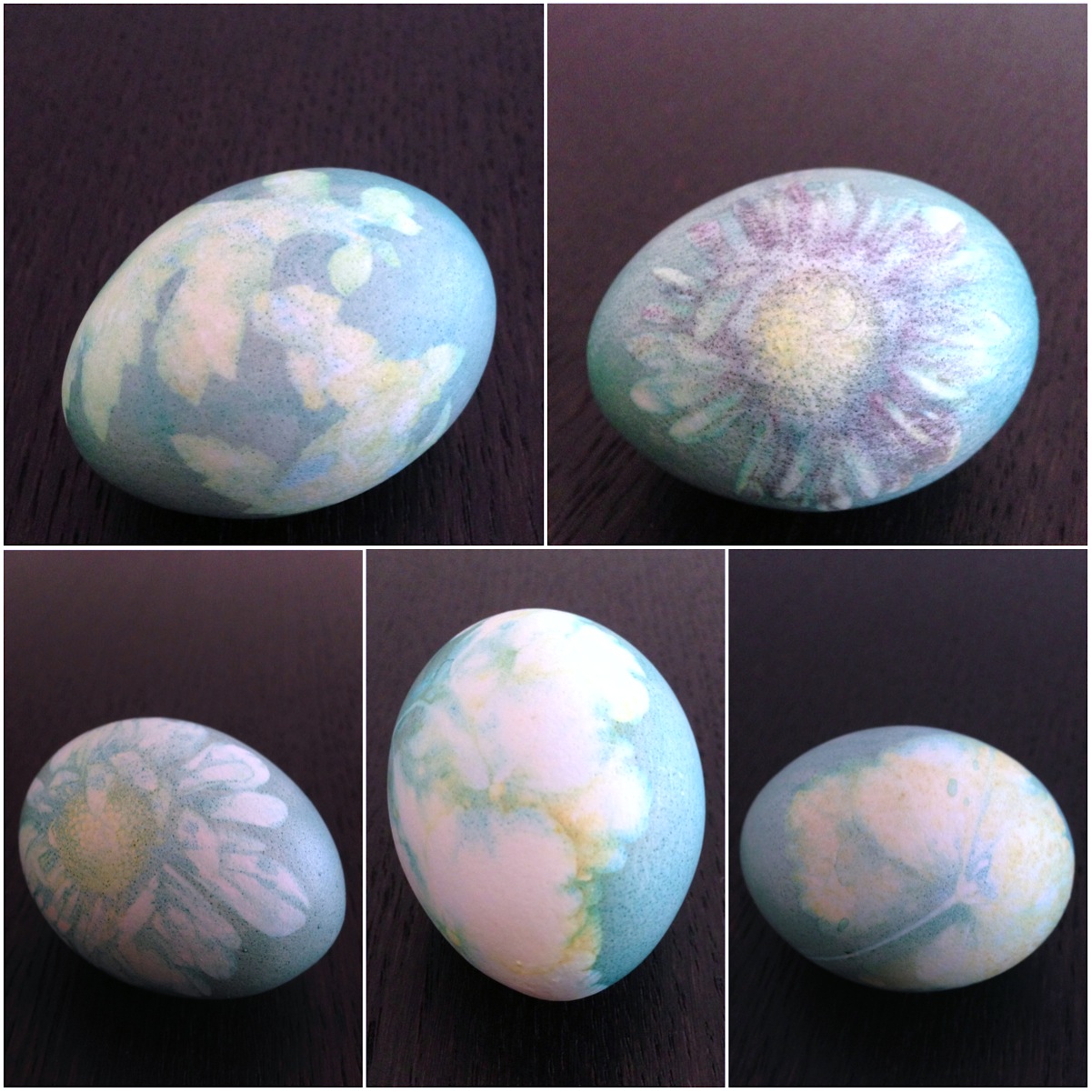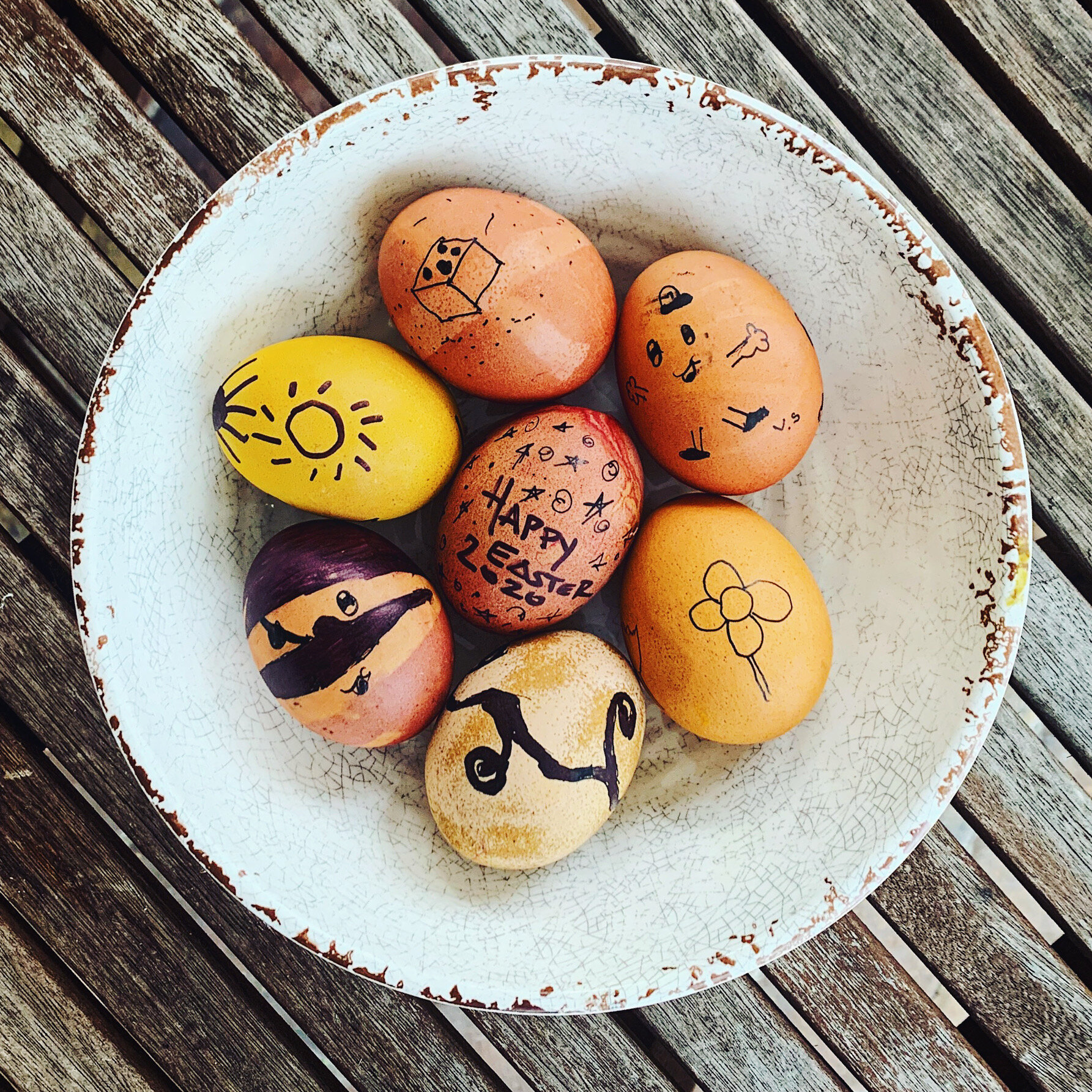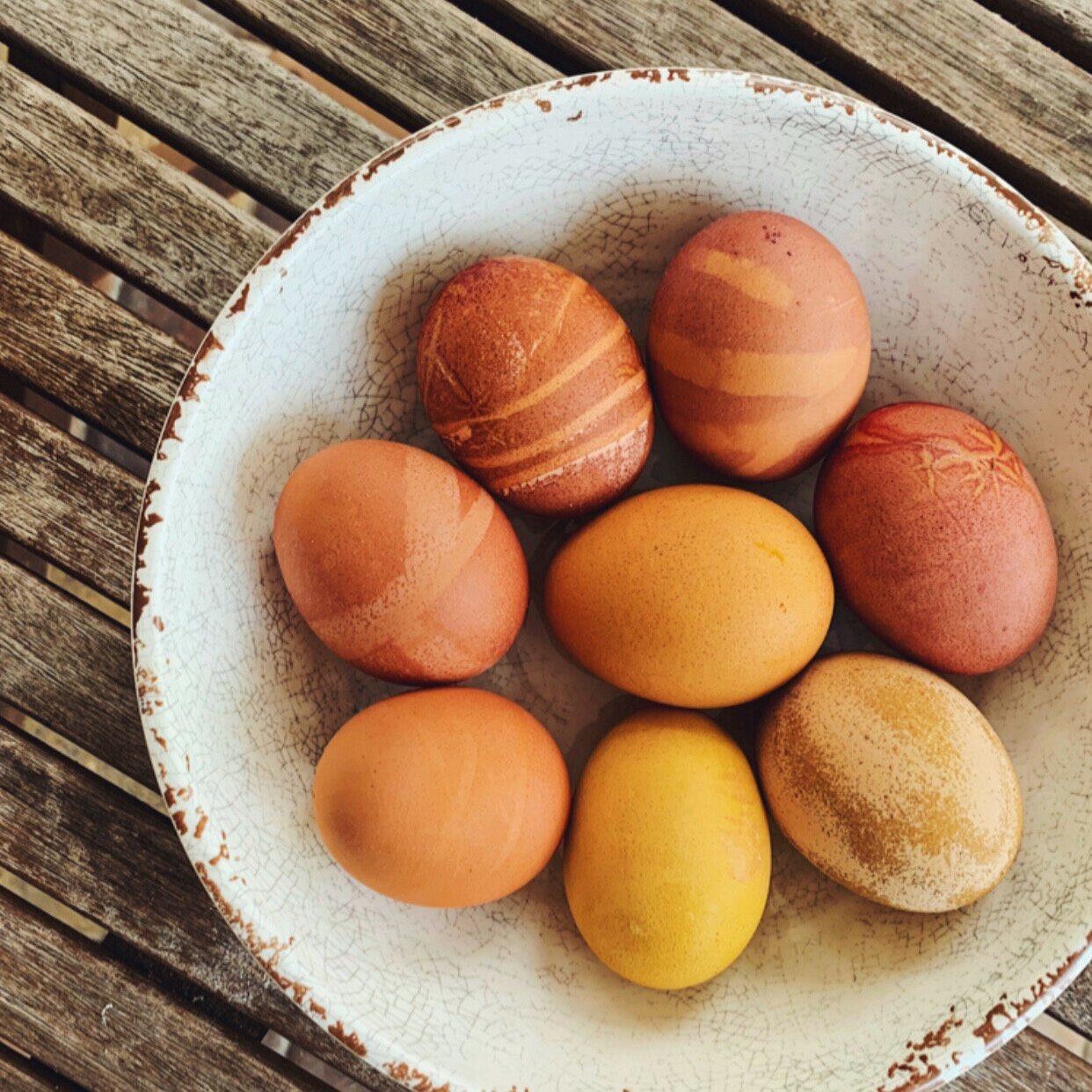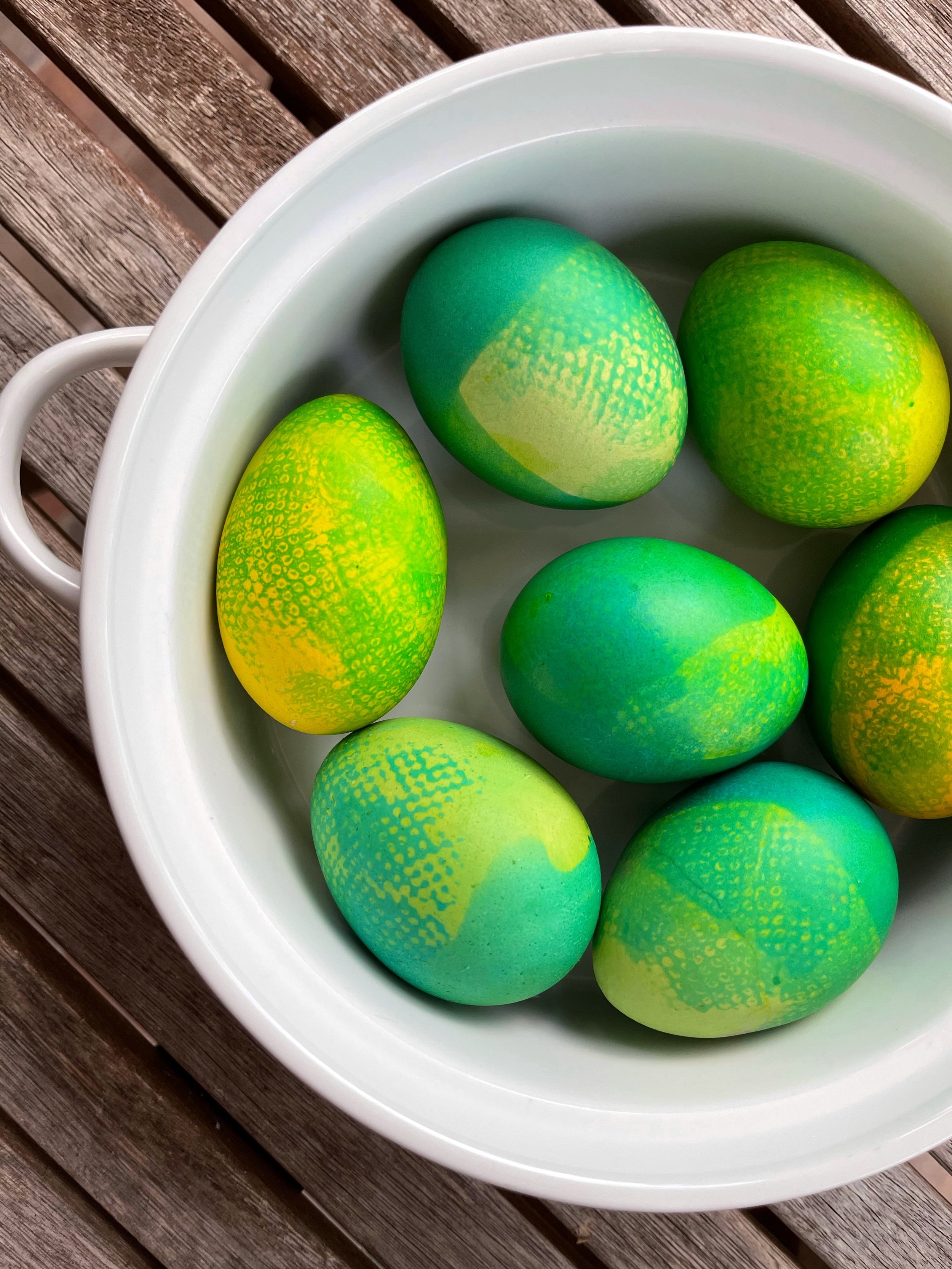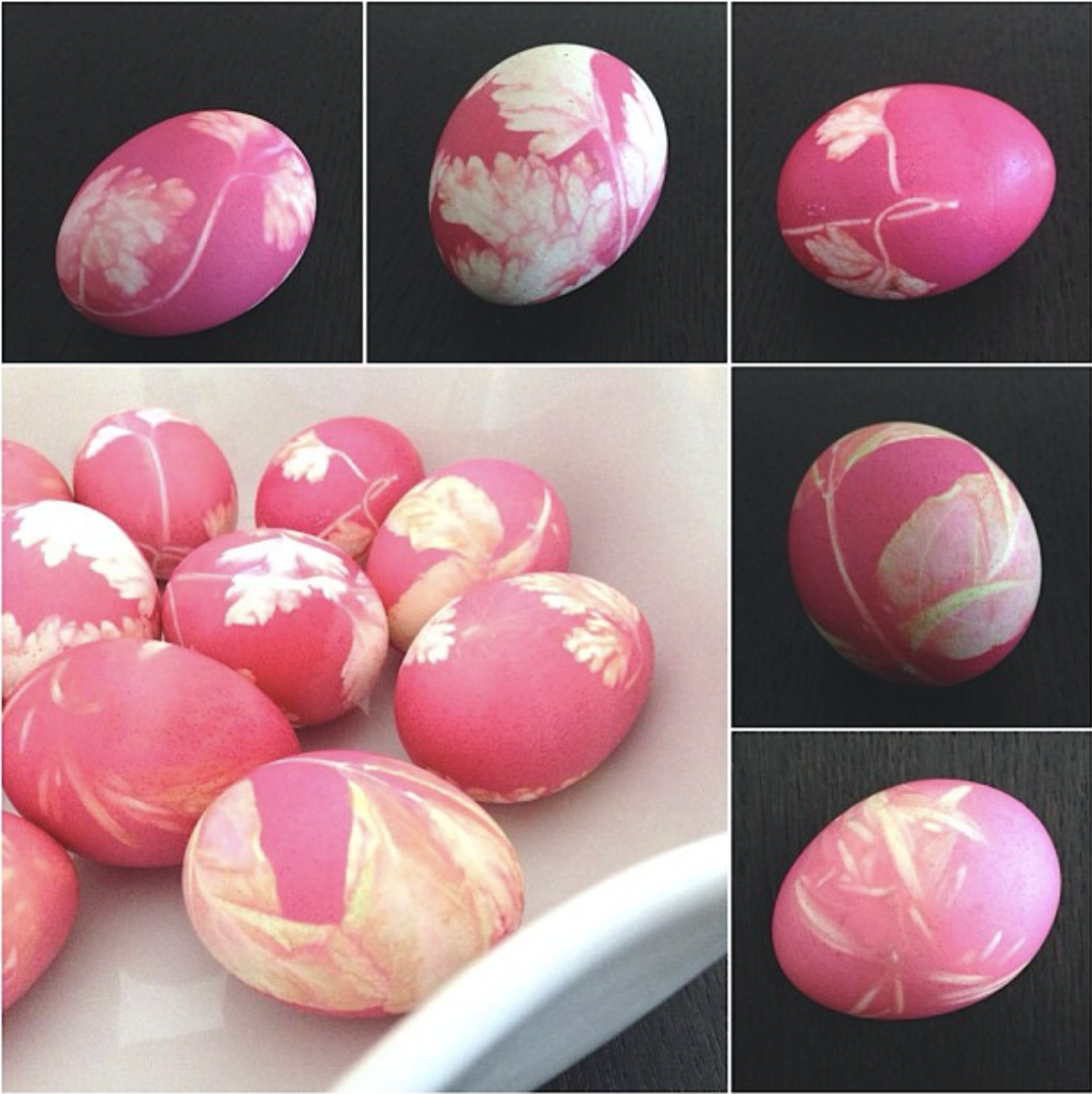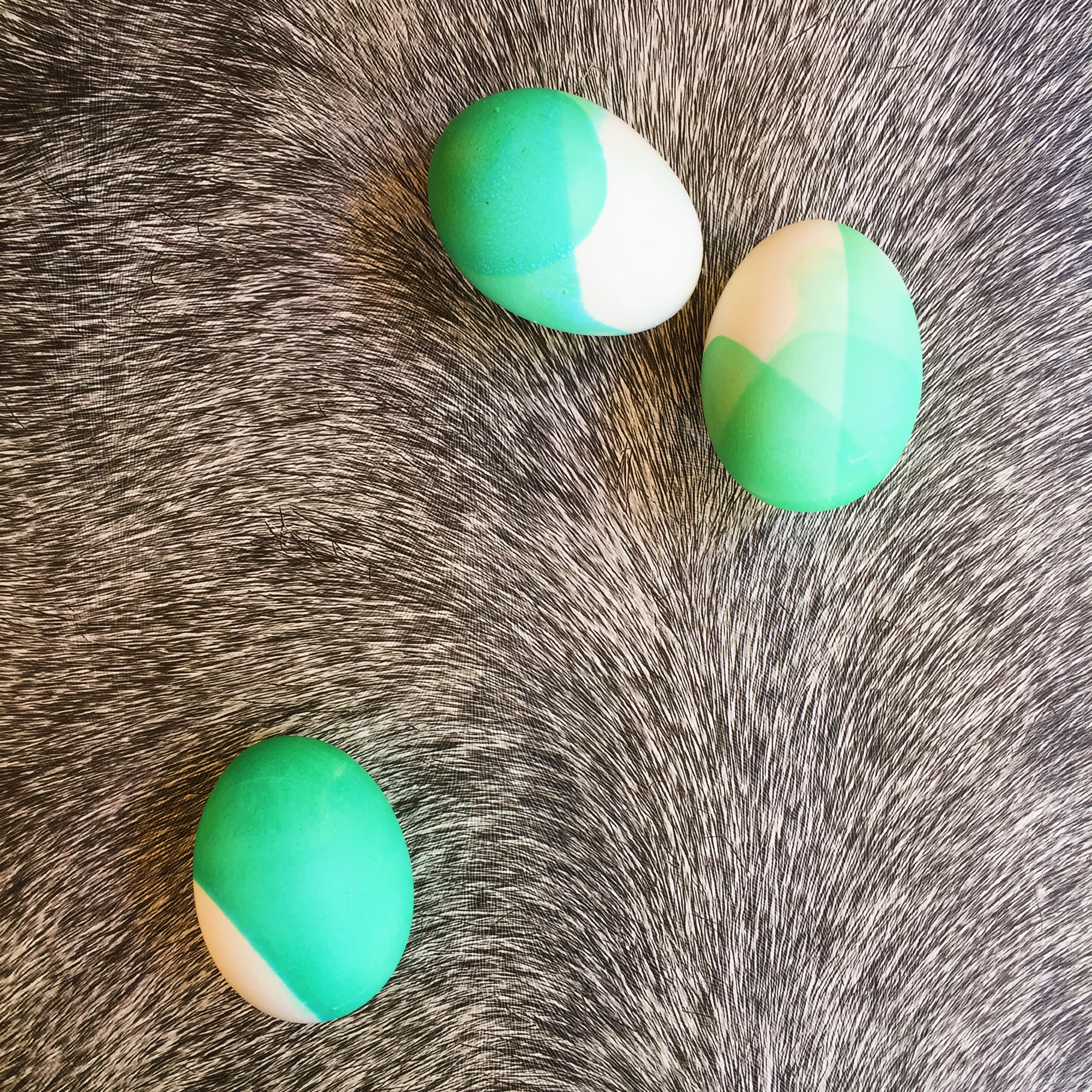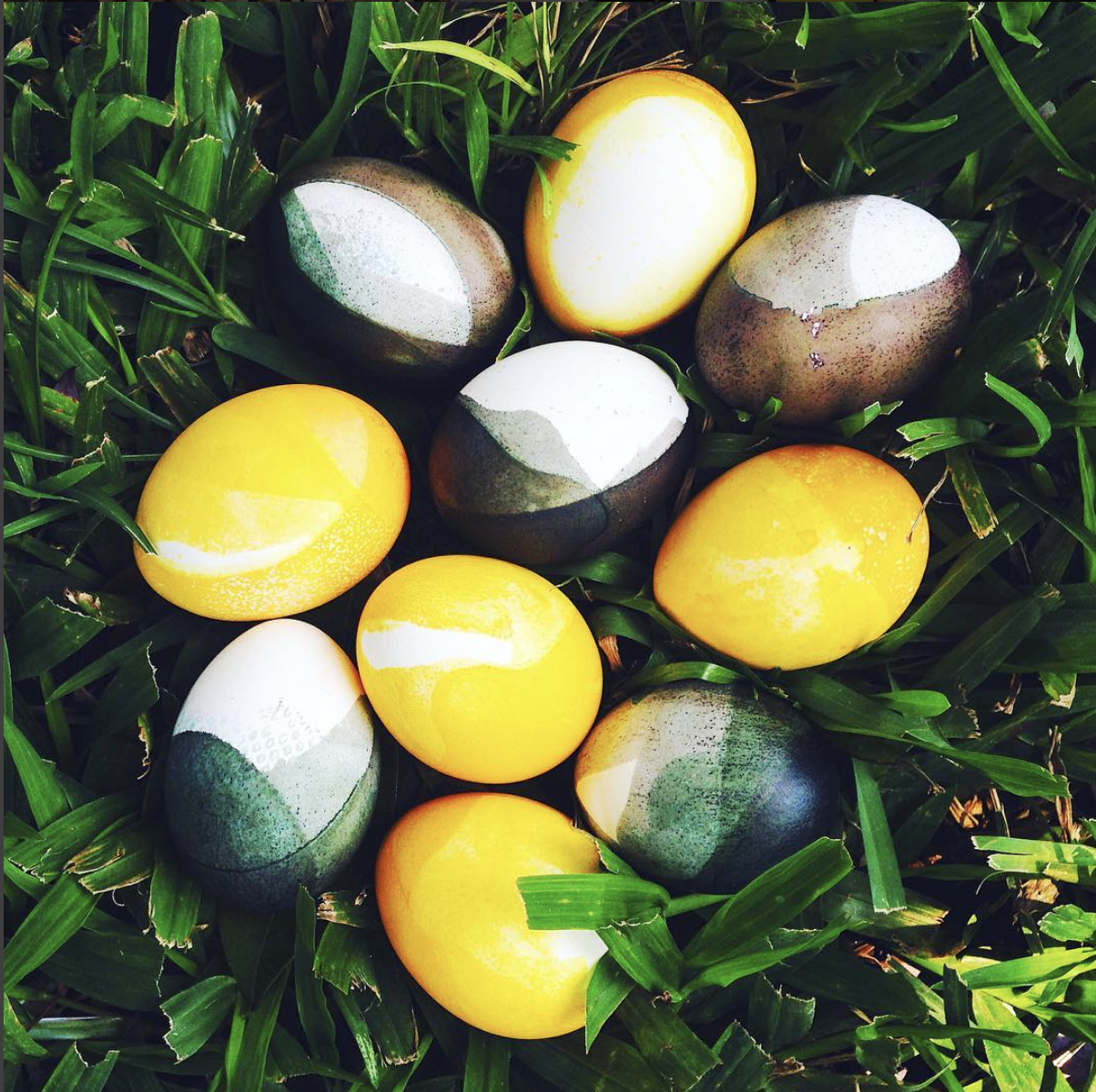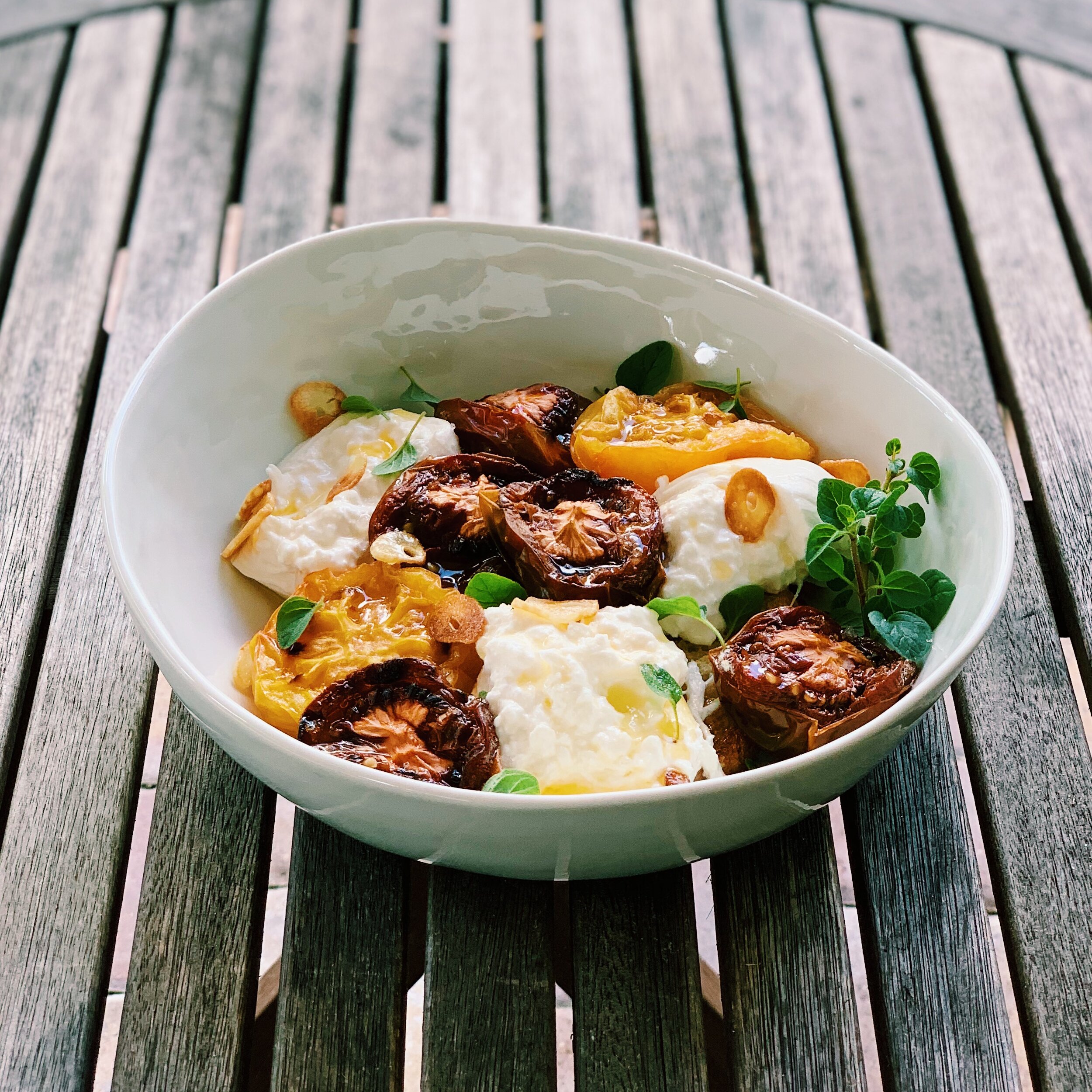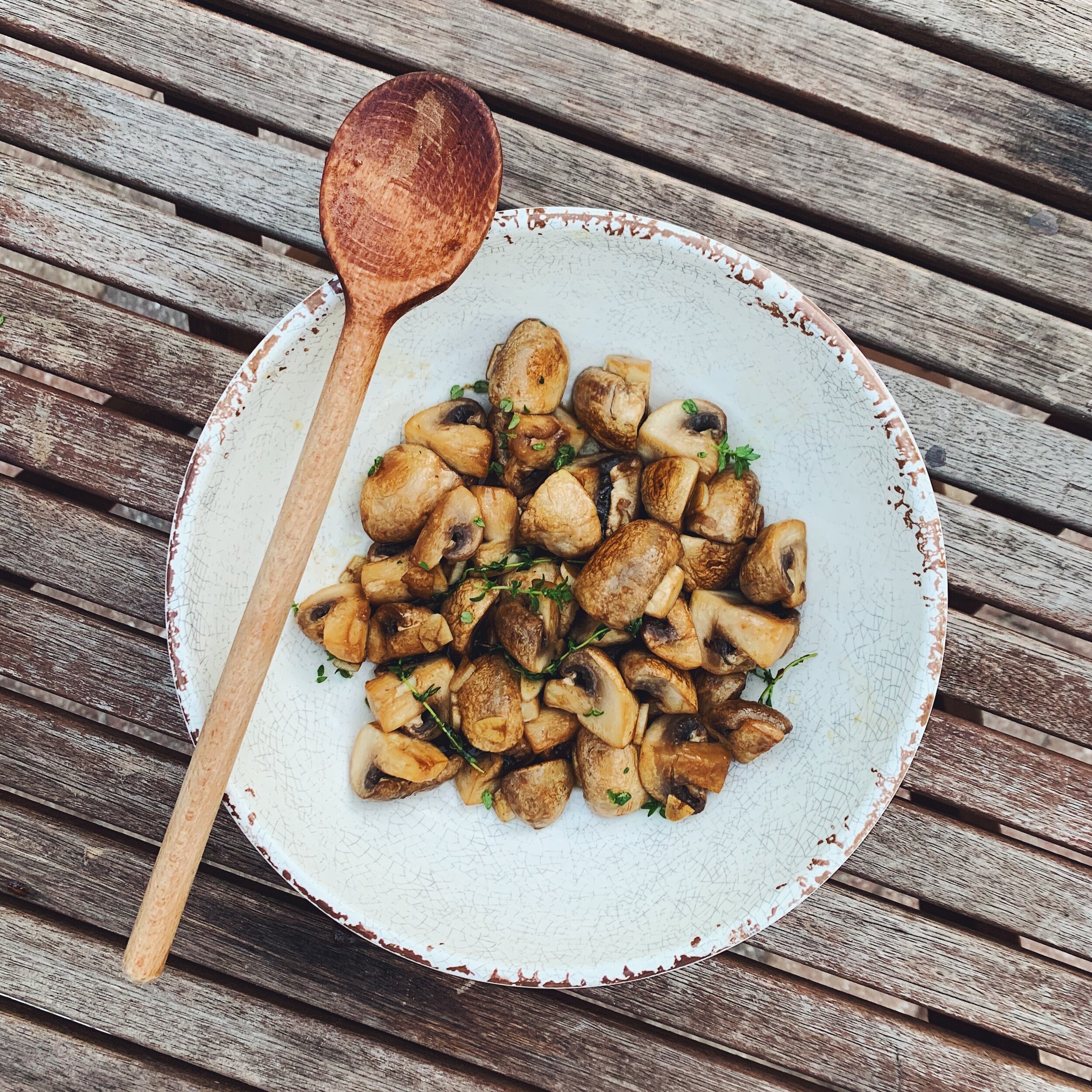Easter Eggs
Here are a few of my favorite techniques I use to decorate our Easter Eggs :)
Chromatic Eggs
This method uses pre-boiled eggs*. You will need food coloring, white vinegar, small cups or bowls and some paper towels.
In each mini bowl put 10 drops of food coloring and 2 tablespoons of white vinegar. Carefully dip the egg in the color, let it dry and dip again in another bowl and on a different side of the egg. Play with the curves and let it overlap. You can create great patterns and shades.
Botanical Eggs
Choose white eggs for dying… the color will catch better on a white egg than on a brown one.
Pick herb leaves like rosemary, mint, thyme, tarragon, or even flower… let your creativity guide you :))
Moisten each egg with a little bit of water, place the flower or leaf face down on the egg. Fix the leaf on the egg with a piece of panty hose. Stretch the square of panty hose as much as you can and secure it with a rubber band. That way, everything will be “locked in” and ready for boiling and coloring. You can dye the eggs by boiling them in a pot with hot water (of course) adding a little bit of food safe coloring and a tablespoon of vinegar. The vinegar helps the dying process of the egg shell.
Once cooked, remove the piece of panty hose, and peel off the leaf...
You can also use spinach, onion skins and other natural ingredients as coloring agents.
Tribal Eggs
This method uses pre-boiled eggs*. I used black food coloring. In a large glass, pour 10 drops of coloring, 1 tablespoon of white vinegar and 1/2 cup boiling water. Submerge two boiled eggs at a time (make sure the eggs are covered with water). Let them sit for 10 to 15 minutes. Remove and roll on paper towel to dry. Wait for a few minutes for the eggs to dry completely then play with metallic markers. Have fun! :)
The chemical composition of the black food coloring and the vinegar give uneven pattern to the end result. Each egg will come out slightly different.
Kids to the rescue
Easter Eggs 2020, during the first months of the Covid-19 pandemic.
When working on my Easter egg designs I like to use white eggs. They are easier to manage specially when experimenting with light colors and tricky techniques. Fast forward to April 2020, only brown eggs in the fridge, quarantine in full mode and limited access to the supermarket (no, white eggs are not essential and definitely not an emergency!). I have learned some lessons this year that I want to share: 1/ Food coloring on brown eggs makes intense, beautiful deep dark colored Easter eggs. I know that from guiding a couple of friends wondering about the food coloring capabilities over stressed out phone calls and messages. I did not have food coloring on hand… HA! Let’s continue with the lessons learned: 2/ Natural dyes take a (very very) long time to act. 3/ Using natural dyes on brown eggs is not the easiest project ever. 4/ Whatever the dying result ends up to be, kids armed with some black markers will save the day.
Reptile Eggs
In 2021, our Easter egg decoration was inspired by my daily freaky encounters in the jungle, also known as the backyard. Welcome to Miami. I used the chromatic egg technique I describe in this post and polished them using nothing else than paper towel and food coloring: Meet the “Reptile Eggs”.
*Foolproof Hard-Boiled Eggs
Bring a pot of water to a boil.
Add the eggs straight out of the fridge.
Boil for 8 minutes (use the timer!).
Remove the pot from the heat. Drain the water out and let the eggs + pot sit under running cold water for a couple of minutes.
Add ice cubes. A LOT OF ICE CUBES!
Set aside for 10 to 15 minutes… (go make yourself a cup of coffee).***
Crack, jump, make music and peel the eggs.
It should be easy and smooth!
Click here for a small video link to my foolproof method.
*** For easter eggs, stop here,… the hard-boiled eggs are now ready for your favorite decorating method.

